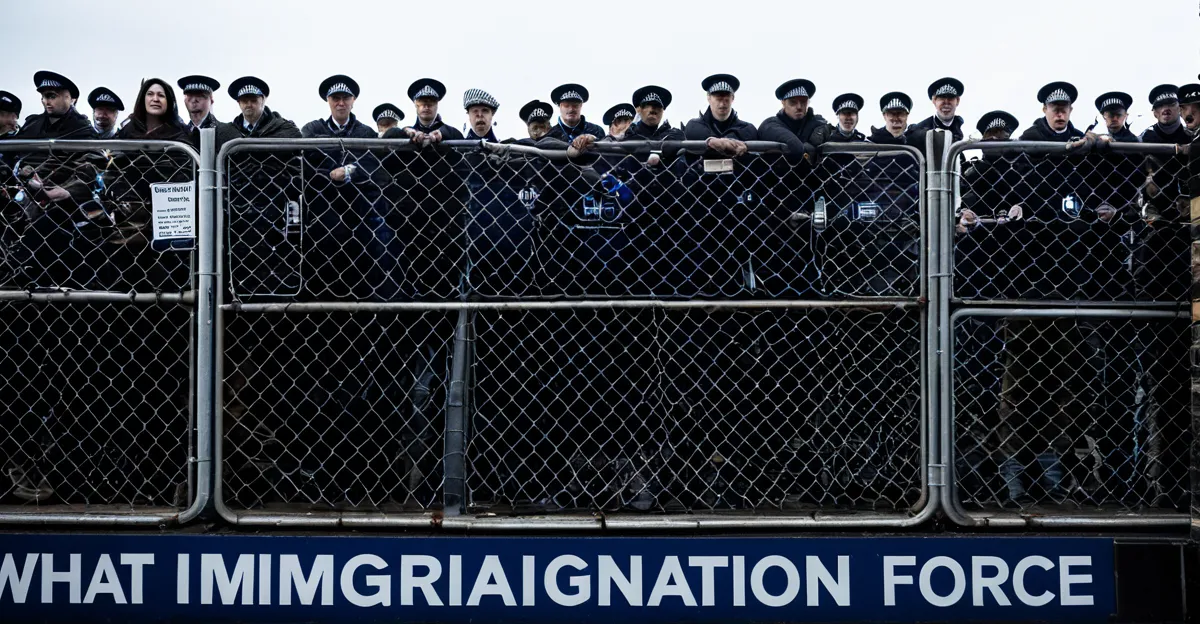Overview of Recent UK Immigration Policies
Since Brexit, the UK immigration policy has undergone substantial reform, shifting towards a skills-based system. The government’s post-Brexit immigration laws focus on attracting qualified workers while imposing stricter controls on low-skilled migration. This approach aims to balance economic needs with public concerns about immigration levels.
Key changes include the introduction of a points-based system that evaluates applicants on criteria such as job offer, skill level, and salary thresholds. This system affects the flow of migrant workers by prioritizing those who meet these qualifications, directly influencing workforce demographics. Additionally, new workforce regulations restrict access for sectors traditionally reliant on lower-skilled migrants, such as hospitality and agriculture.
This might interest you : How are local UK news platforms evolving in the digital age?
Government objectives behind these revisions emphasize boosting high-skill talent inflow to support economic productivity while reducing dependency on low-skilled migrant labor. The evolving policies also reflect a desire to control irregular migration and enhance labor market flexibility. Understanding these shifts is essential to assess how workforce structures and labor availability will adapt in the coming years.
Impacts on Employment Rates and Workforce Composition
Post-Brexit immigration restrictions have notably influenced employment rates and the composition of the UK labor force. Limiting the migrant workforce, especially low-skilled workers, has altered labor force demographics across several sectors. Precise data show a reduction in migrant workers in industries like hospitality and agriculture, directly impacting overall workforce availability. This shift often results in employers increasing reliance on domestic workers, but gaps remain due to skill mismatches and worker shortages.
Topic to read : How Are Technology Advancements Shaping the Future of UK Journalism?
According to recent migrant workforce statistics, while some sectors report stable employment rates, others experience strains related to reduced labor flexibility. The contraction in migrant labor supply has led to adjustments in labor market participation, with some domestic workers entering sectors previously dominated by migrants. However, the pace of these changes varies regionally and sector-by-sector, with some areas facing rising unemployment even as others struggle to fill vacancies.
This evolving dynamic highlights complex interactions between immigration policies and employment patterns, underscoring the importance of ongoing monitoring and responsive workforce planning to maintain economic stability and growth.
Labor Shortages, Surpluses, and Skills Gaps
The tightening of UK immigration policy has intensified labor shortages in key sectors such as hospitality, agriculture, and health care. This scarcity arises mainly from reduced inflows of migrant workers traditionally filling these roles. Workforce regulations limiting low-skilled migrant labor have left certain industries struggling to maintain adequate staffing levels, exacerbating existing skills gaps.
An analysis of sector-specific workforce data reveals that shortages are most acute where manual and seasonal work predominates. Conversely, some professions experience occupational surpluses due to changing demand and domestic skill availability. Employers are adjusting recruitment strategies to overcome these hurdles by increasing wages, adopting flexible working conditions, and investing in training programs to develop domestic talent.
Immigration remains crucial in bridging skills gaps, particularly for specialized roles where domestic candidates are insufficient. The post-Brexit immigration laws predominantly target high-skilled applicants, which helps address some shortages but often overlooks lower-skill needs essential to certain sectors. Therefore, balancing policy aims with sector demands is vital to mitigate labor market distortions caused by rigid immigration controls.
Wage Levels and Economic Productivity
Post-Brexit immigration policies have significantly affected wage impact across various sectors. Restricted access to migrant labor, especially in low-skilled roles, has often pushed wages upward due to increased competition for a smaller domestic workforce. For example, industries such as hospitality and agriculture report higher salary trends as employers strive to attract scarce workers. However, this wage growth may not be uniform, with some regions experiencing stagnation tied to limited economic activity.
Economic productivity also feels the effects of these changes. Limited migrant inflows disrupt business operations, reducing output in sectors dependent on seasonal or manual labor. While the emphasis on skilled migration aims to enhance overall productivity, the mismatch in labor supply can constrain growth. Industry experts note that UK immigration policy reforms create challenges for maintaining business competitiveness, particularly for companies reliant on flexible staffing models.
UK statistical data underlines these trends, showing wage pressures paired with uneven productivity gains. Thus, immigration policy adjustments have a nuanced influence, balancing wage demands against the broader economic performance and workforce availability.
Long-term Effects on UK Workers and Businesses
Adapting to new post-Brexit immigration laws, businesses are reshaping recruitment and retention strategies to build a more resilient workforce. With reduced migrant labor availability, firms increasingly invest in training domestic talent, prioritizing long-term workforce planning. This proactive approach aims to fill skill shortages and reduce vulnerability to immigration fluctuations.
Employers also explore automation and flexible work models to mitigate labor constraints. These changes reflect an evolving labour market adapting to workforce regulations limiting migrant inflows. Over time, this may boost employee development but also pressure businesses to balance immediate staffing needs with sustainable growth.
The implications for the UK’s global competitiveness are nuanced. While a skilled domestic workforce can drive innovation, persistent labor market resilience challenges—such as lingering skills gaps—could constrain industries dependent on a diverse labor pool. Experts warn that without adaptive policies, some sectors may struggle to maintain productivity.
Ultimately, the long-term success of UK businesses relies on strategic workforce planning that embraces both evolving immigration policies and domestic labor potential, ensuring sustainable economic growth amidst ongoing regulatory shifts.
Perspectives from Recent Commentary and Data
Recent workforce data and expert opinions highlight the complex effects of current UK immigration policy. Economists emphasize that post-Brexit immigration laws have reshaped labor market dynamics, particularly by restricting low-skilled migrant labor. This shift, supported by recent surveys, shows mixed impacts: some sectors face chronic labor shortages, while others adapt through upskilling domestic workers. Employer groups stress the necessity for more flexible workforce regulations to maintain operational capacity, especially in seasonal industries.
Policy analysts argue that a balanced approach is vital. They point out that overly rigid immigration controls risk exacerbating skills gaps, limiting economic growth and productivity. Meanwhile, case studies reveal businesses innovating by investing in training and automation, reflecting adaptation to the current regulatory environment.
Ongoing debates revolve around recalibrating immigration rules to better align with sector-specific needs without compromising government objectives. Many experts encourage evidence-based policy adjustments to enhance labor market responsiveness and sustain the UK’s competitive edge. Overall, recent workforce data underline the importance of adaptable immigration frameworks as the UK navigates post-Brexit labor challenges.






